Is your salad making you fat?
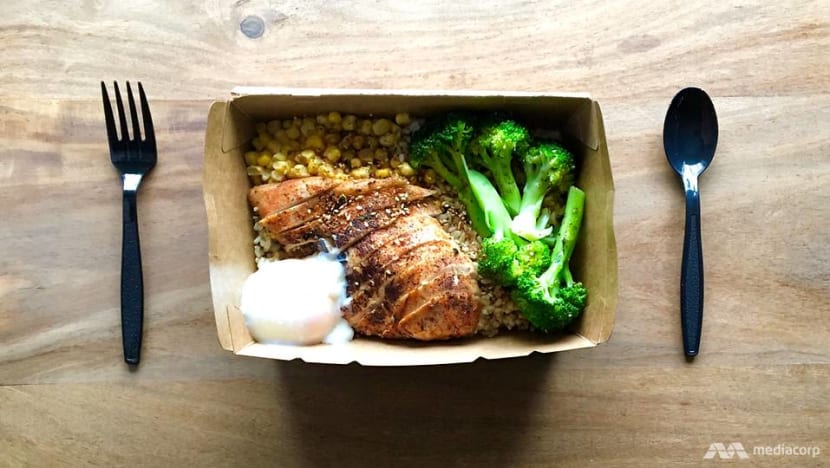
(Photo: Khoo Bee Khim)
SINGAPORE: Salads have beefed up, literally. And it is not just flame-grilled steaks that have been added to the ubiquitous bed of arugula leaves.
Pop into any salad stop along the Shenton Way belt and you will see that they have evolved to include ingredients such as smoked duck, sous vide chicken breast, pulled pork, onsen eggs, pasta, brown rice, soba and quinoa, to name a few.
Resembling upmarket cai fan (Chinese for economic rice) than salad, these go-to lunch options for the busy and health-conscious crowd are also known as macro bowls, so named for combining macronutrients - carbohydrates, protein and fat - in a bowl, said Ms Bibi Chia, principal dietitian from Raffles Hospital’s Diabetes & Endocrine Centre.
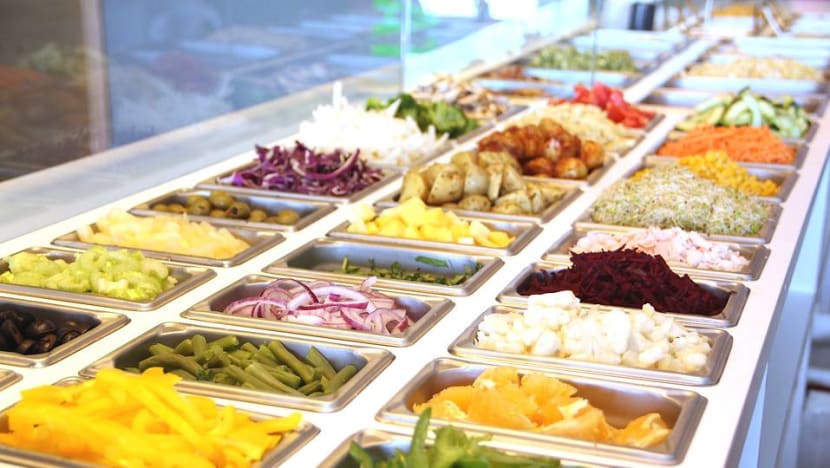
These one-dish meals seem well balanced from the outset but they can create a false sense of security that you have made a healthy lunch choice, said experts. Here is a look at some of the missteps and how you can order a better macro bowl.
CONTROL YOUR PORTION
Macro bowls can tip your calorie balance over if you are not careful with the portion, said Ms Chia. “Macro bowls can come in large portions and hence, people might be over-consuming calories from good food,” she said.
As a guide, said Ms Chia, fill a quarter of your plate or bowl with carbohydrates, another quarter with protein, and half with vegetables. "In general, the total calories for that meal should be less than 500 calories," she said.
The amount of calories you need also depends on your day's activities. "Pick a small or regular size if you are relatively sedentary for that day. If you have or are about to do a heavy workout, you can opt for a medium or large serving," said Ms Jaclyn Reutens, dietitian with Aptima Nutrition and Sports Consultants.
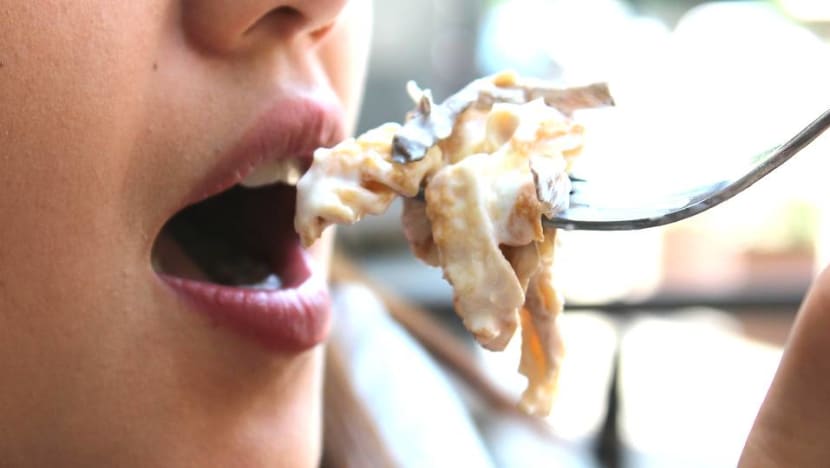
KNOW WHAT THE PROTEIN ITEMS ARE
Would you consider beans, edamame and chickpeas as vegetables or protein? If you answer vegetables, you have to relook the portion of protein in your order.
“Beans, edamame and chickpeas are protein that are often mistaken for vegetables. So if you order more than two protein items, you will unknowingly increase your fat intake as these foods also contain fat,” said Ms Reutens.
Her tip is to keep to one or two protein items from options such as beef steak, salmon fillet, tuna flakes, chicken breast, edamame, tempeh, tofu, chickpeas, hummus, nuts, seeds and beans.
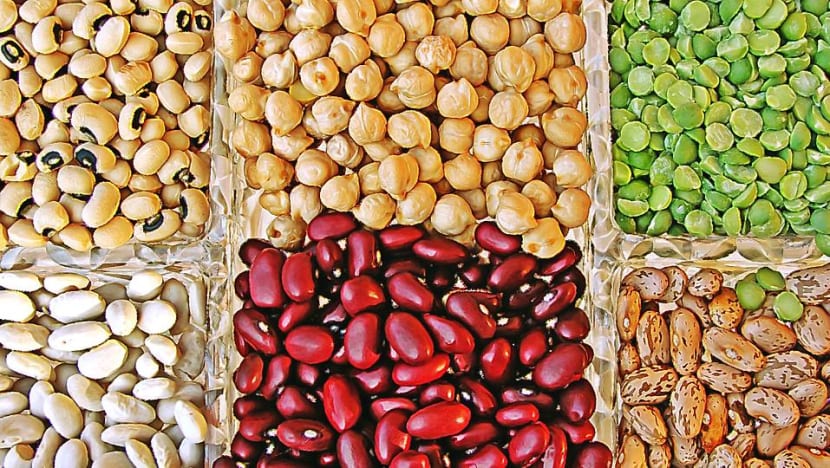
It can be too much of a good thing when it comes to vegetables. "You can end up feeling bloated from too much raw vegetables. Remember, it’s all about balance," said Ms Reutens.
DON'T OMIT CARBS
There is a tendency to skip carbs thinking it might be healthier for you, said Ms Reutens. "However, you may end up feeling peckish one to two hours after your meal and end up reaching for a cookie or chocolate."
Pick one or two carb foods from examples such as are sweet potato, potato, quinoa, couscous, brown rice, pumpkin and pasta.
"Note that [root vegetables like] pumpkin, sweet potato and potato are considered carbs and not vegetables," she said. Quinoa, which some people think of as a protein, is actually a carb, she added.
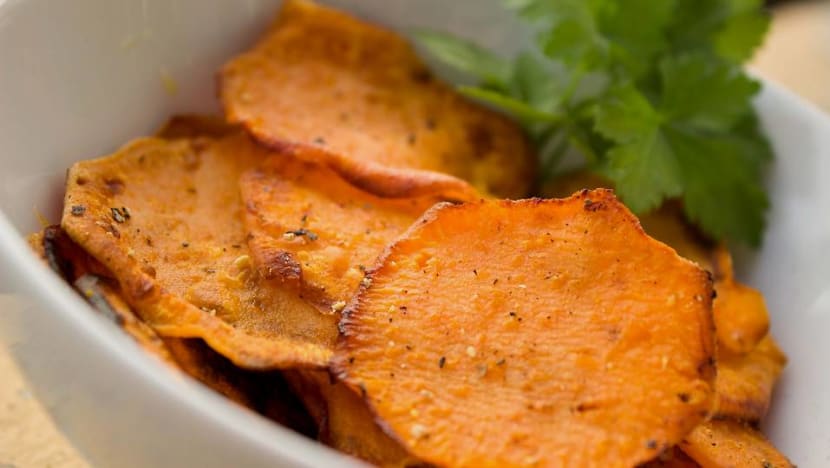
Dressings such as garlic soy, Thai chilli sauce and ponzu are common in places that offer macro bowls. They may be healthy because they are not made with eggs, cream or mayonnaise. Still, try not to load up on the dressing.
"At times, an olive oil-based dressing can also be high in calories if most of it is made of oil," said Ms Chia.
When in doubt, consider dressings with herbs and those that are "more liquid in nature". Options that are less creamy and opaque include vinaigrette, lemon juice, and herbed Italian dressings, said Ms Reutens.
"Alternatively, ask for the dressing on the side and use it sparingly," said Ms Chia.
GAIN FROM YOUR TOPPINGS
The toppings are a way to add more nutrients to your macro bowl, said Ms Reutens. "A sprinkling of seeds like chia or sunflower add zinc, potassium and healthy fats to your bowl. Dried fruit like raisins or cranberries add extra Vitamin C and iron to the mix."
Try to avoid bacon bits, croutons, fried onions, sausages and sour cream as they are high in sodium and fat, especially saturated fat, said Ms Reutens.
HOW TO ORDER A HEALTHIER LUNCH FROM THE ECONOMIC RICE STALL
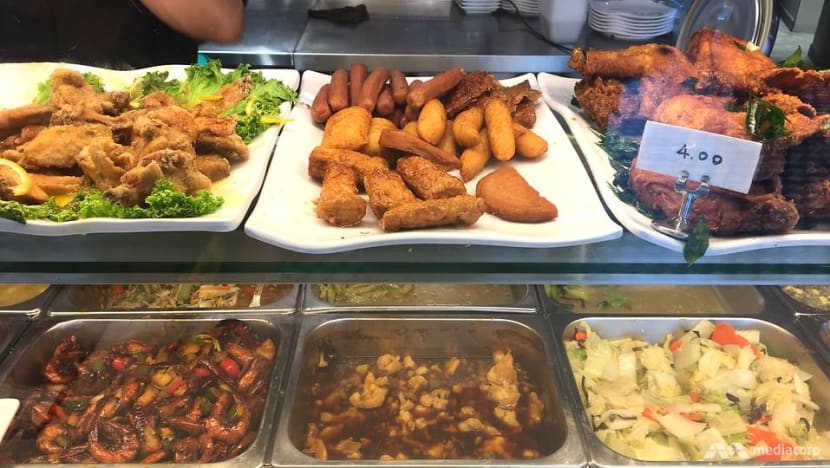
What you can get nutritionally from the economy rice stall is not too different from a macro bowl, if you know what to order, said Ms Reutens. And you would probably pay at least half the price. Here are some tips from her:
- Fill a quarter of your plate with rice. That is your carbs for the meal.
- Choose a healthy protein dish; two if you are working out that day to feed your muscles. Healthy protein examples include stir-fried chicken in a brown gravy, stir-fried pork with ginger, stir-fried beef with black bean sauce, steamed fish, tofu, ikan bilis, steamed egg or stir-fried chilli sotong. Steer clear of deep-fried and oily dishes such as sweet and sour pork, lemon chicken, omelette and chicken curry.
- Opt for two vegetable dishes. Ask the stall assistant to take vegetables from the top of the pile as most of the oil would collect at the bottom of the platter. Avoid the curried vegetables or those soaked in sambal.
- Decline to have more gravy. That will save you the sodium and fat lurking in most gravies.












